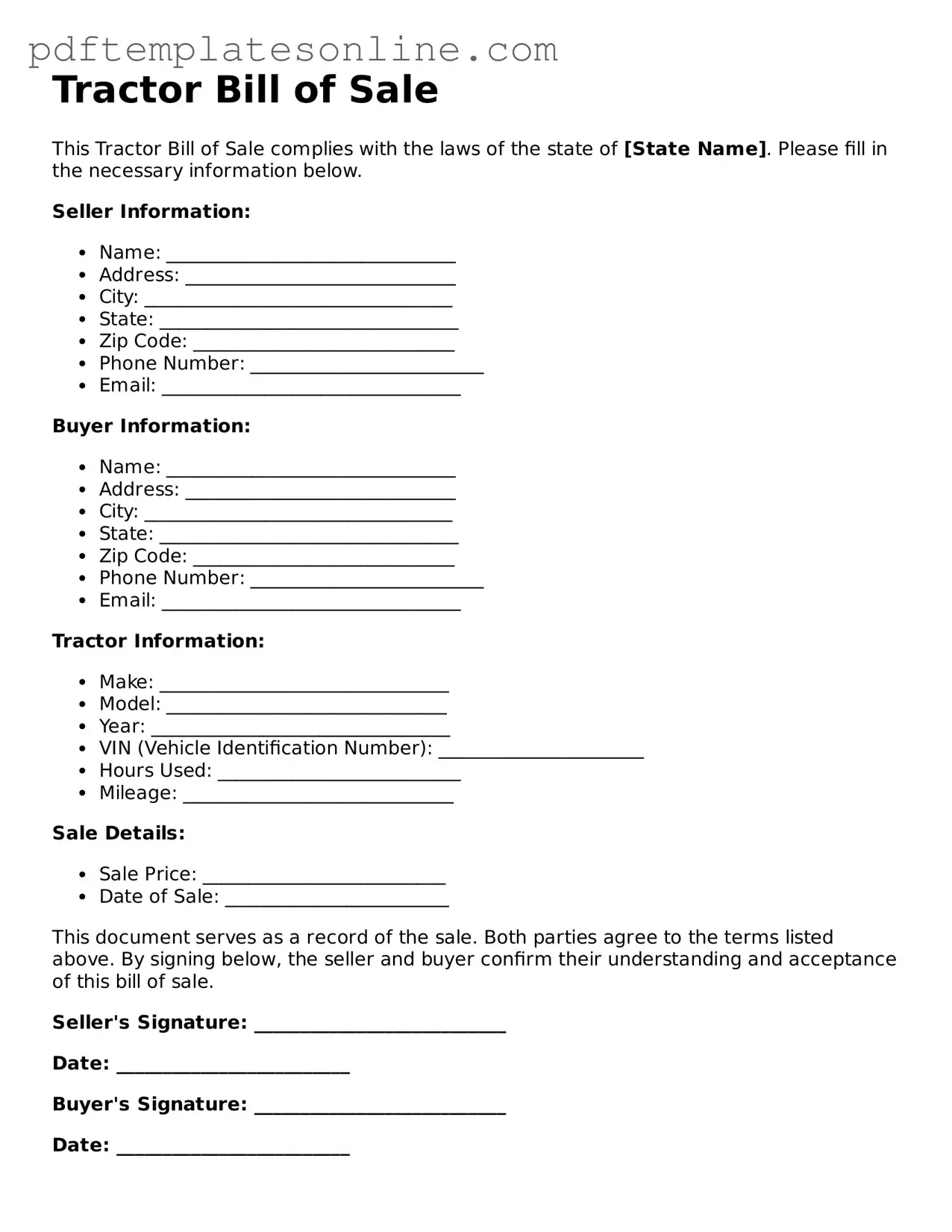Completing a Tractor Bill of Sale form is a crucial step in the process of buying or selling a tractor. However, many individuals overlook important details that can lead to complications down the road. Here are eight common mistakes to avoid when filling out this form.
One of the most frequent errors is failing to provide complete information. Sellers often neglect to include essential details such as the tractor's make, model, and year. Omitting this information can create confusion and may lead to disputes regarding the tractor's identity.
Another mistake involves not accurately recording the Vehicle Identification Number (VIN). This unique identifier is critical for tracking ownership and registration. Double-checking the VIN against the tractor's documentation ensures that the correct number is recorded, preventing potential legal issues.
People also often forget to include the sale price. This information is vital for both parties, as it establishes the terms of the transaction. Without a clear sale price, misunderstandings can arise, leading to disputes later on.
In addition, some individuals fail to sign the document. Both the buyer and seller must sign the Tractor Bill of Sale to validate the transaction. Neglecting this step can render the document ineffective and may complicate future ownership claims.
Another common oversight is not including the date of the sale. This detail is important for establishing the timeline of ownership transfer. Without a date, it may be difficult to resolve any disputes that arise after the sale.
People sometimes make the mistake of not keeping copies of the completed form. Both parties should retain a copy for their records. This documentation serves as proof of the transaction and can be invaluable in case of future disputes.
Additionally, some individuals overlook the importance of notarization. While not always required, having the bill of sale notarized can add an extra layer of security to the transaction. This can be particularly important in cases of high-value sales.
Lastly, many people fail to check for state-specific requirements. Each state may have different regulations regarding the sale of agricultural equipment. It’s essential to research these requirements to ensure compliance and avoid potential legal issues.
